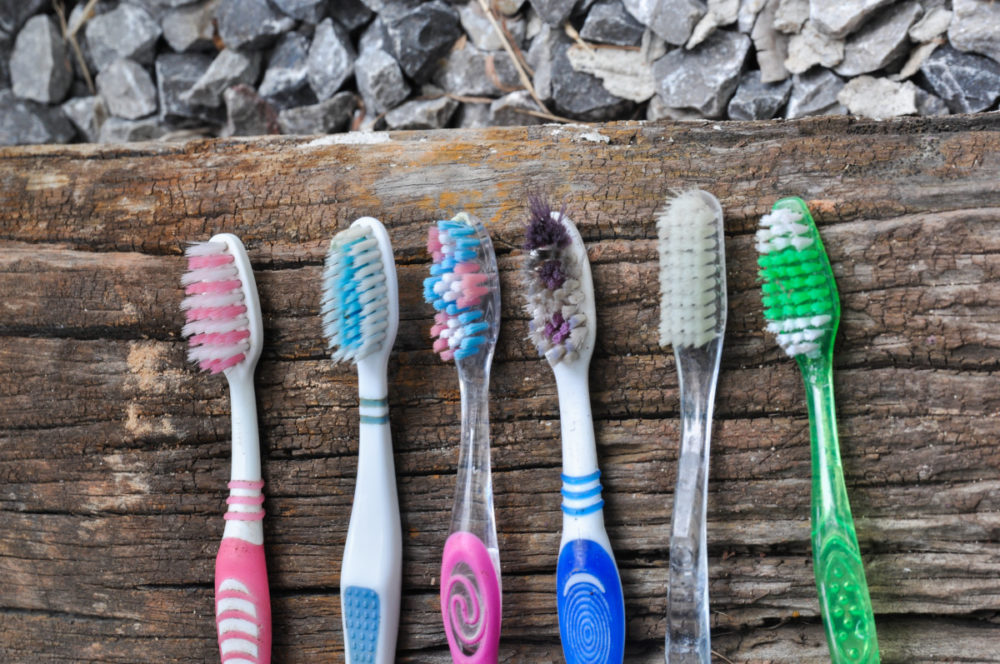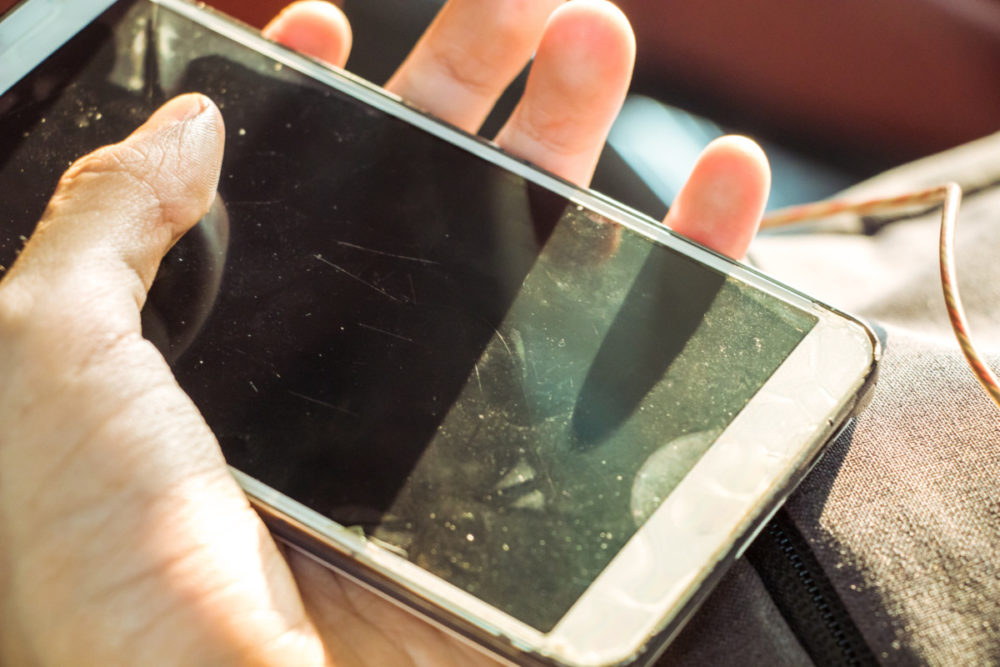
You probably think the toilet seat is the dirtiest thing you come into contact with on a daily basis – but that’s far from the case!
Everyday items lurking in your kitchen, your car and other areas of your home can contain several thousand times more germs than the humble latrine.
While being a clean freak can actually lead to worsened immunity, poor gut health and increased risk of allergies, a home overrun with certain germs can be equally as worrisome.
Over 65% of colds, 50% of all cases of diarrhea and up to 80% of food-borne illnesses are caught in the home – with common household items usually thought to be the trigger.
To strike a happy medium, and protect yourself from illness, make sure to add these 17 germ infested things to your household cleaning routine:
1. Dish Cloths and Sponges
The very items you use to clean your dishes and pans could actually be making them dirtier!
In one study, scientists discovered that there are one million bacteria per square inch on an average dish cloth and a whopping 10 million per square inch on a kitchen sponge…making them 200,000 times dirtier than a toilet seat!
Another study of hundreds of US homes found that 7% of kitchen towels were contaminated with MRSA – the antibiotic resistant super drug. Coliform bacteria (present in feces) has been discovered in 89% while E. coli was found on 25%!
To avoid harboring bacteria, wash your sponges, kitchen towels and cloths every other day on a high heat. You can also zap sponges in the microwave for two minutes to kill the germs. Allow cloths to dry out between uses, as the bugs can’t survive for more than a few hours in dry fabrics.
2. Other Cleaning Equipment

Sponges and cloths aren’t the only germy cleaning items – basically, anything you use to pick up dirt can hold onto microbes and provide them with a pleasant breeding ground.
Research has found that 50% of vacuum cleaner brushes contained fecal bacteria and 13% were housing E. coli.
These brushes, along with mop heads, brooms, dustpans and dusters should all be washed or replaced regularly.
Likewise, your dishwasher and washing machine can be rife with microbes so monthly deep cleans are essential.
3. Bath Towels
Dead skin cells and moisture provide a perfect breeding ground for bacteria which is why towels can be a high risk item.
And, if you share towels you could end up cross contaminating other members of your household – everything from colds and flu to athlete’s foot to serious infection can be transmitted via bathroom towels.
To avoid this, wash and replace all your towels at least every three days and use vinegar in place of fabric softener to remove odors and improve the absorbency of the fabric.
4. Cutting Boards

The average cutting board has about 200% more fecal bacteria than the average toilet seat highlighting the importance of practicing hygienic food preparation techniques.
Keep separate boards for meats and vegetables and wash thoroughly with hot soapy water between uses.
Should you opt for wood or plastic when it comes to chopping boards? Either can be sanitary as long as you clean and store them correctly as per manufacturers’ instructions.
Old, scarred plastic boards are a haven for bacteria whereas hard wooden boards – like maple – are more resistant to grooves and nicks where bacteria can hide.
Thoroughly cleaning inside the fridge, microwave, cupboards and other surfaces that come into contact with food is also important for eliminating nasty bacteria.
5. The Kitchen Sink
Food particles and sponges both contribute to the huge amount of bacteria found in the kitchen sink – on every inch of it, from the drains to the faucet.
In fact, there may be over 500,000 bacteria in your kitchen sink…that’s about 1,000 times more than what’s in your toilet.
Experts recommend scrubbing the sink and faucet once a day with a mild bleach and water solution. For those who prefer not to use chemicals, a blend of tea tree oil, dish soap, water and baking soda will both whiten and sanitize.
6. Welcome Mat
While a welcome mat (or two!) can be vital in the fight against home allergens, they need to be regularly washed or sprayed with natural disinfectant in order to do their job and kill the huge amounts of bacteria each mat houses.
A study has even found that almost 96% of shoe soles have traces of coliform – which includes fecal bacteria!
When you wipe your feet vigorously on the welcome mat, that’s where many of them stay. Even worse, if you don’t brush your shoes you’ll be tracking these germs into the home.
Remember not to rest your grocery bags or other items on the mat as you fumble for your keys!
7. Toothbrushes

Bacteria, fungi and viruses such as staph and herpes simplex can survive for months on your toothbrush, with scientists finding more than 100 million bacteria living in a single brush.
As these germs multiply amongst the damp bristles, they can lead to oral health issues.
Allow your toothbrush to dry between brushings (use a separate morning and night toothbrush if necessary); clean it regularly with castile soap and a few drops of essential oil; and replace it every three months, or more often if you fall ill.
Finally, keep it away from the toilet – studies show that bacteria are sprayed up to 25cm above the rim when you flush with the seat up!
8. Make Up Brushes
It’s a fact that 72% of women never wash their cosmetics brushes or sponges, leading to a buildup of dirt and bacteria which cause facial outbreaks.
In addition, many of us store them in the bathroom, which isn’t a good idea for the same reason we shouldn’t keep our toothbrush there!
To have flawless skin, and prevent other illnesses, it’s imperative that you wash make-up brushes and sponges once a week. Here’s our guide to the best natural ways to wash make-up brushes.
Baking soda is a good brush cleanser – learn how to use it here.
9. Purses
Yet another everyday item that is germier than a toilet seat – women’s handbags, particularly the leather variety!
About one third of all bags tested contained fecal bacteria on them – most notably on the bottom of the bag, but also on the handle and certain items inside like cosmetics tubs, business cards and coins.
To keep your bags clean, wipe or wash them regularly and avoid placing them on the bathroom floor or welcome mat!
10. Coffee Machines

According to a swab test of office coffee machines, over 4 million colonies of harmful bacteria and mold – like E. coli, staphylococcus and streptococcus – were found in the water tanks, pod compartment, spout and tray of more than half of those tested.
In another study conducted by NSF International – the public health and safety organization – the coffee maker reservoir showed higher germ counts than bathroom sinks and dog chew toys!
Here are even more reasons why you should stop using your single-cup coffee maker.
11. Light Switches
A bathroom light switch can hold as much bacteria as a trash can, says a study conducted at Simmons College in Boston.
Think that’s bad? At least these germs are your own and unlikely to make you sick. Hotel rooms tested in a University of Houston study found that light switches are one of the most germ-contaminated fixtures in public places.
Wiping down of switches, particularly in the bathroom and kitchen, once a week should keep the germs in check.
12. Remote Controls
Remote controls are used by every member of the household – and many guests – yet are rarely, if ever, cleaned!
All those bacteria-infested fingers transfer a multitude of microbes with every touch, which then safely shelter and breed between the buttons.
In tests on hospital room items, researchers found that remote controls harbored more germs than any other common item in there!
Among the bacteria found, MRSA was only discovered on the remote controls with no traces of it on any other objects tested.
While you’re wiping down your remote controls every other week, make sure to do the same with any games consoles you may have lying around.
13. Phones

Disturbingly, the very device you spend 10 hours a day on could actually harbor 10 times the amount of bacteria that is found on a toilet seat, according to research from the University of Arizona.
None of us would press a toilet up to our face, or tap away on the rim for hours every day, yet we do it with our phones.
The same goes for laptops, tablets and keyboards – each should be gently but thoroughly wiped each day with a soft cloth.
A build-up of germs isn’t the only unhealthy side effect of your smartphone addition – discover the other 15 here.
14. Ear Buds and Headphones
Whether you have to wear a headset for work, or simply listen to music while at the gym, make sure to clean your earphones thoroughly.
A study published in the Online Journal of Health and Allied Sciences has revealed that frequent use of earphones significantly increases bacterial growth in the ear with 86% of ear samples and 62% of earphone samples tested showing bacteria!
With other research showing harmful bacteria on 92% of ear swabs taken from people who regularly share their earphones with friends – yet the same bacteria was found in only 8% of those who don’t share – it’s a good idea to be selfish and keep your headset to yourself.
15. Yoga Mat and Other Exercise Equipment
Working out is one of the best things you can do for your health. But choose where you work out with caution!
According to the findings of a new study, the average exercise bike in a public gym contains 39 times more bacteria than a reusable plastic cafeteria tray, treadmills have 74 times more bacteria than a water faucet and free weights have 362 times more bacteria than a toilet seat.
Other research says yoga mats are more germy than cell phones or airline seats because of the bacteria that gets transferred through direct skin contact.
While personal yoga mats are generally fine, if you bring yours to the gym or have recently been sick, you run a higher risk of being exposed to illness.
In between uses, spray your mat or gym equipment with a blend of water, vinegar and essential oils and allow to dry thoroughly.
16. The Car
With the average US commute taking 50 minutes, for many the car is an extension of the home. This is reflected in the fact that steering wheels have nine times more germs than a public toilet seat.
The 10% of motorists who never clean their car should bear this in mind, particularly as so many people tend to eat on the go!
17. Your Hands!

Your hands are probably the major transporter of germs – between objects and from other people to yourself. In fact, the average human hand harbors about 150 different species of bacteria – some beneficial, others not so much.
Get into the habit of washing your hands regularly; not just after petting the dog or cutting meat, but before applying make-up or going to bed.
People who wash their hands seven times a day have approximately 40% fewer colds than the average person!
To give your hands a thorough washing, use a natural soap like castile.
The Centers for Disease Control and Prevention say that using soap is more effective than water alone because the surfactants in soap lift soil and microbes from skin.
Avoiding anti-bacterial soaps is a wise move though – there is no evidence that they actually work, they contribute to antibiotic resistant bacteria, and they contain toxic ingredients that are detrimental to our health.
